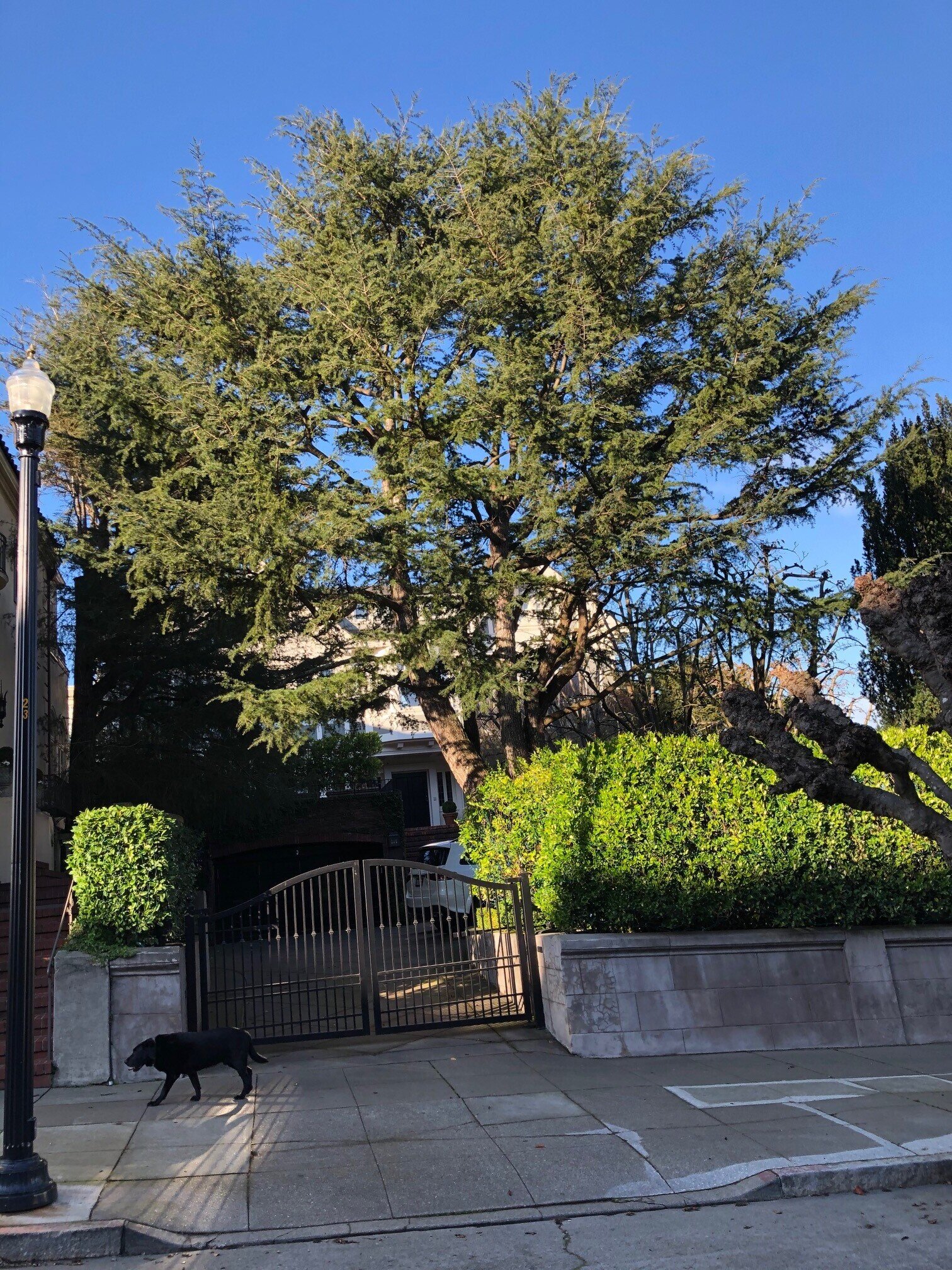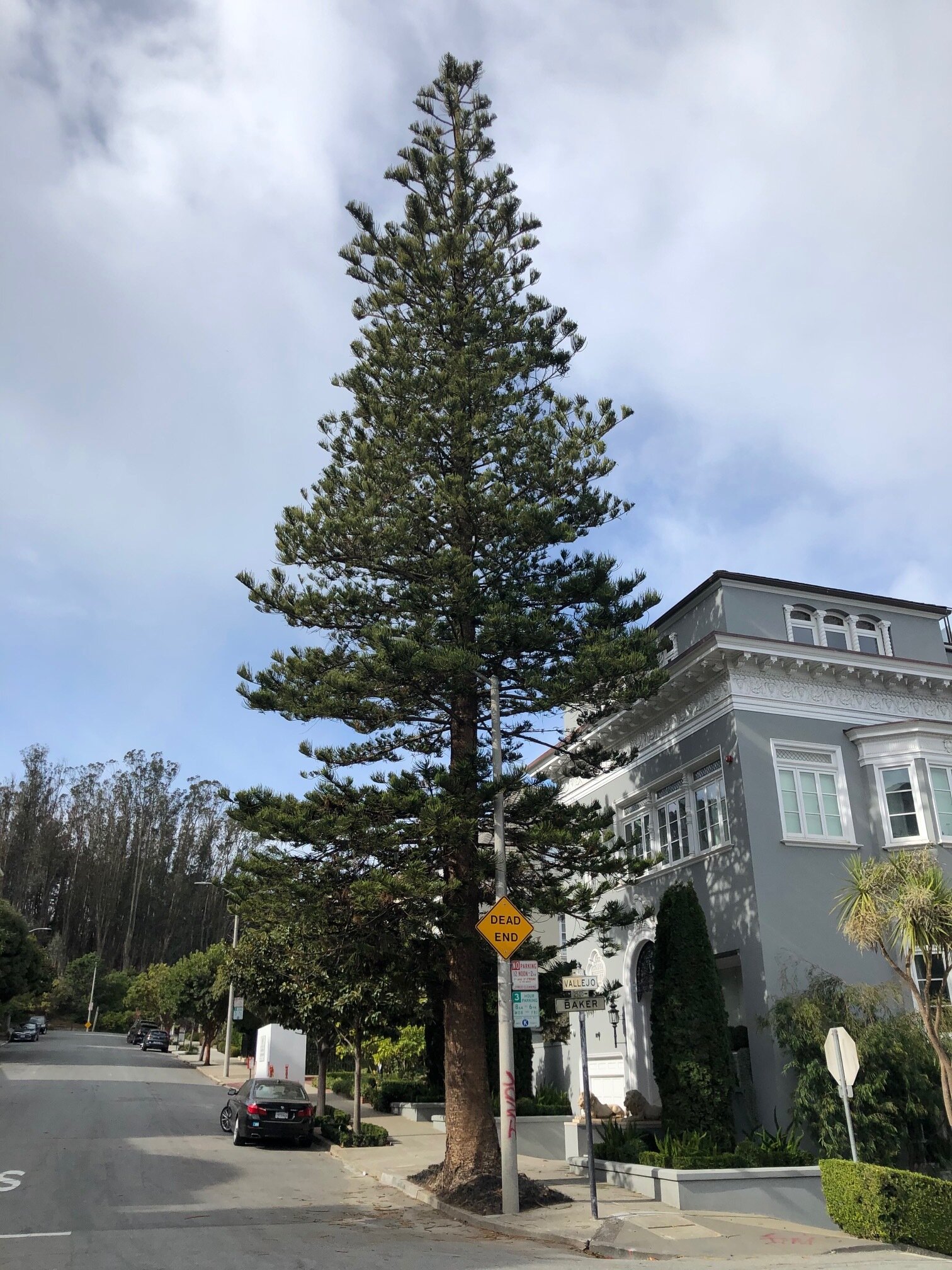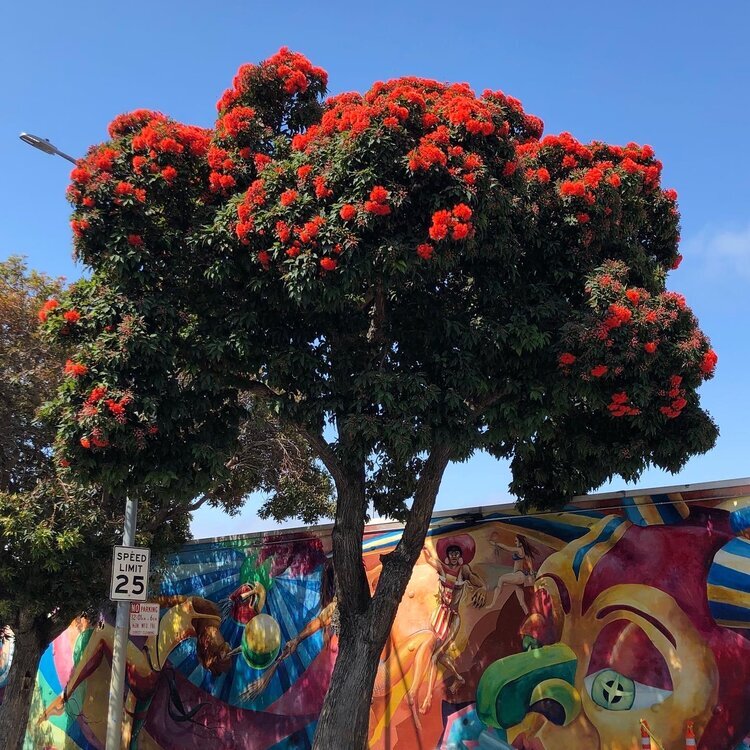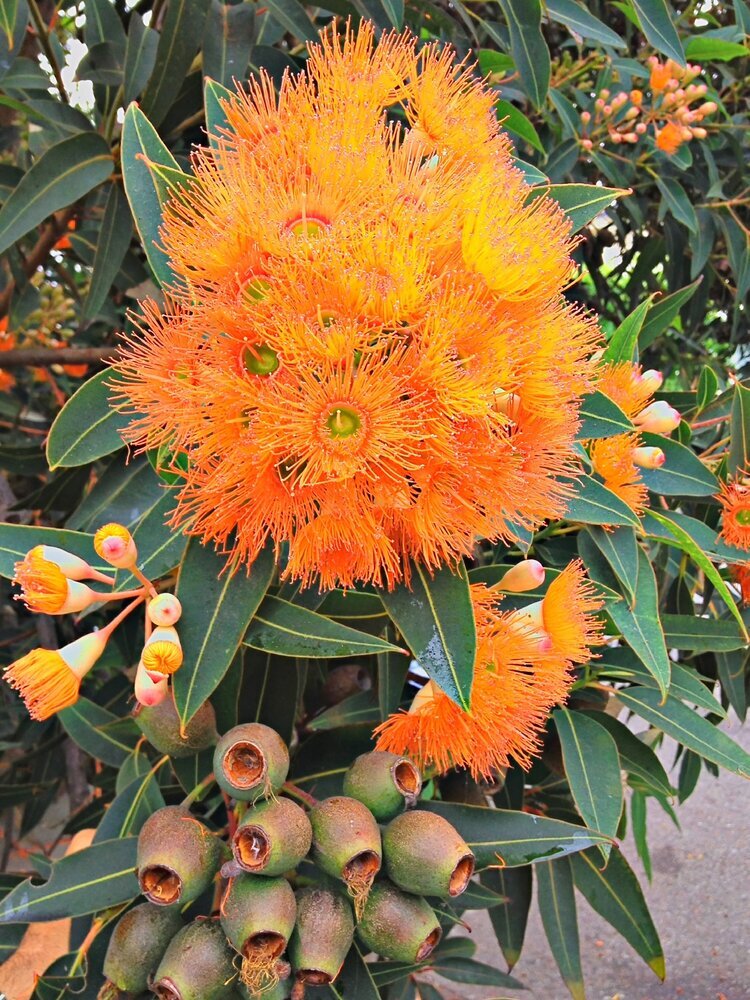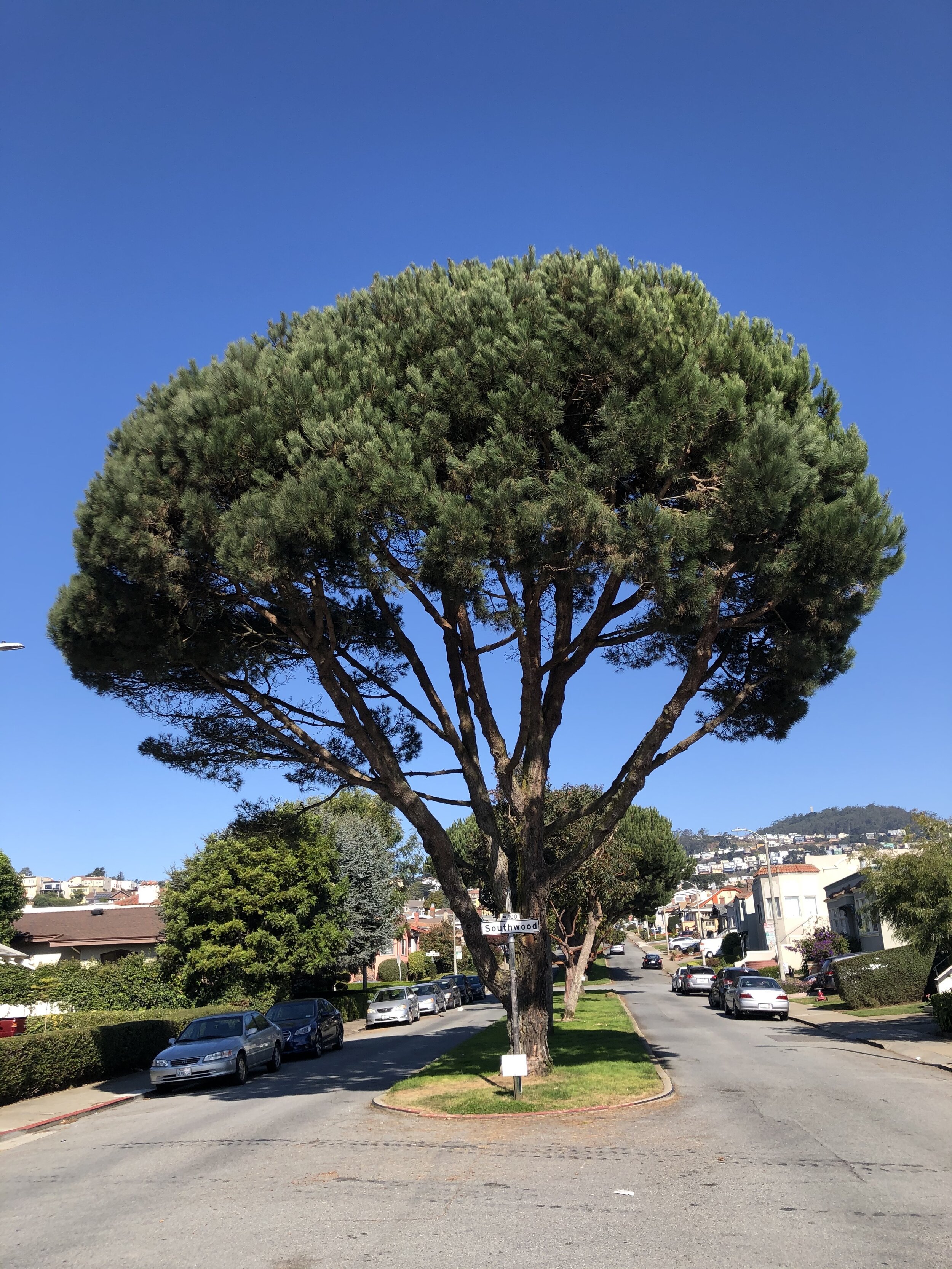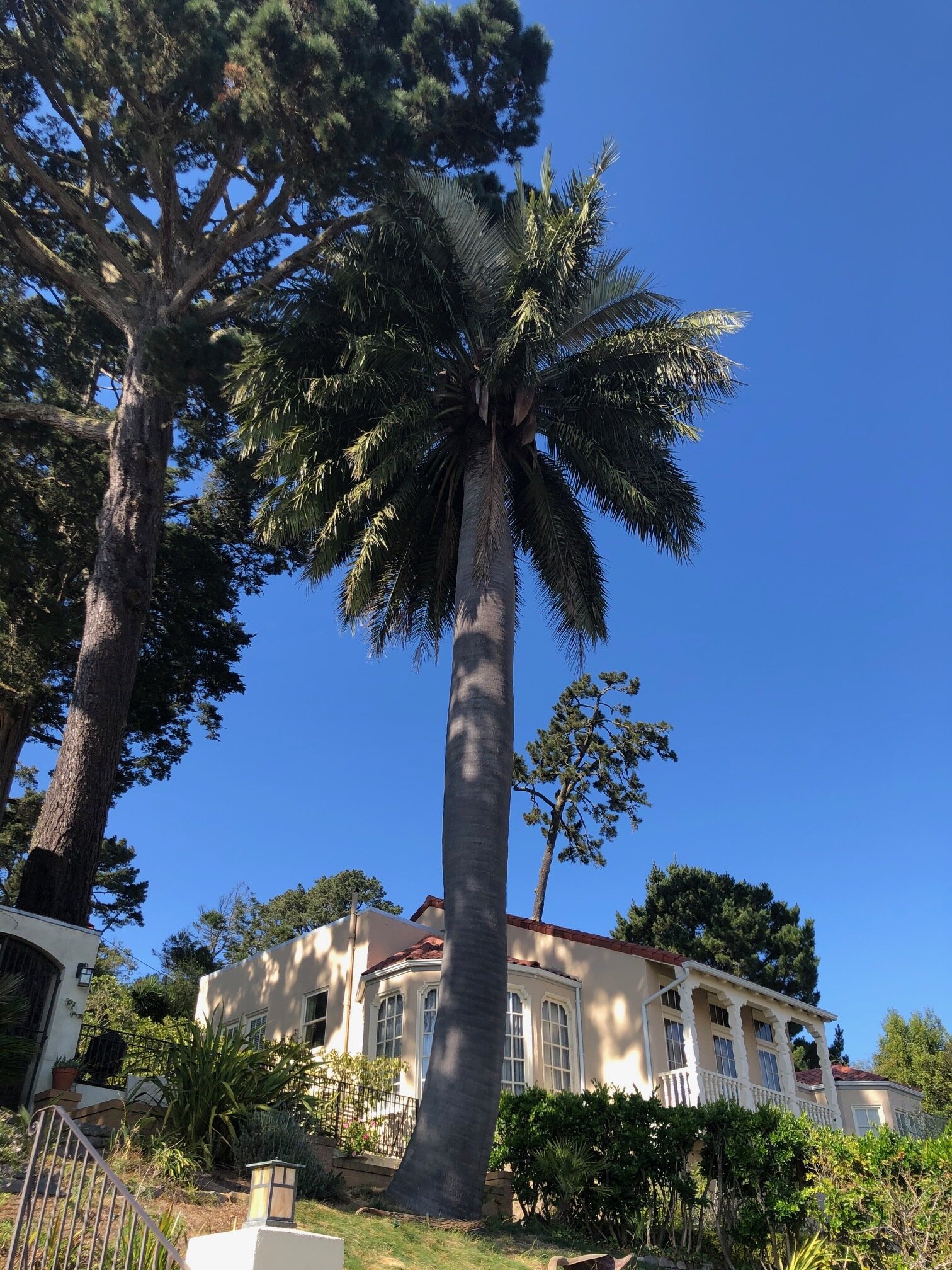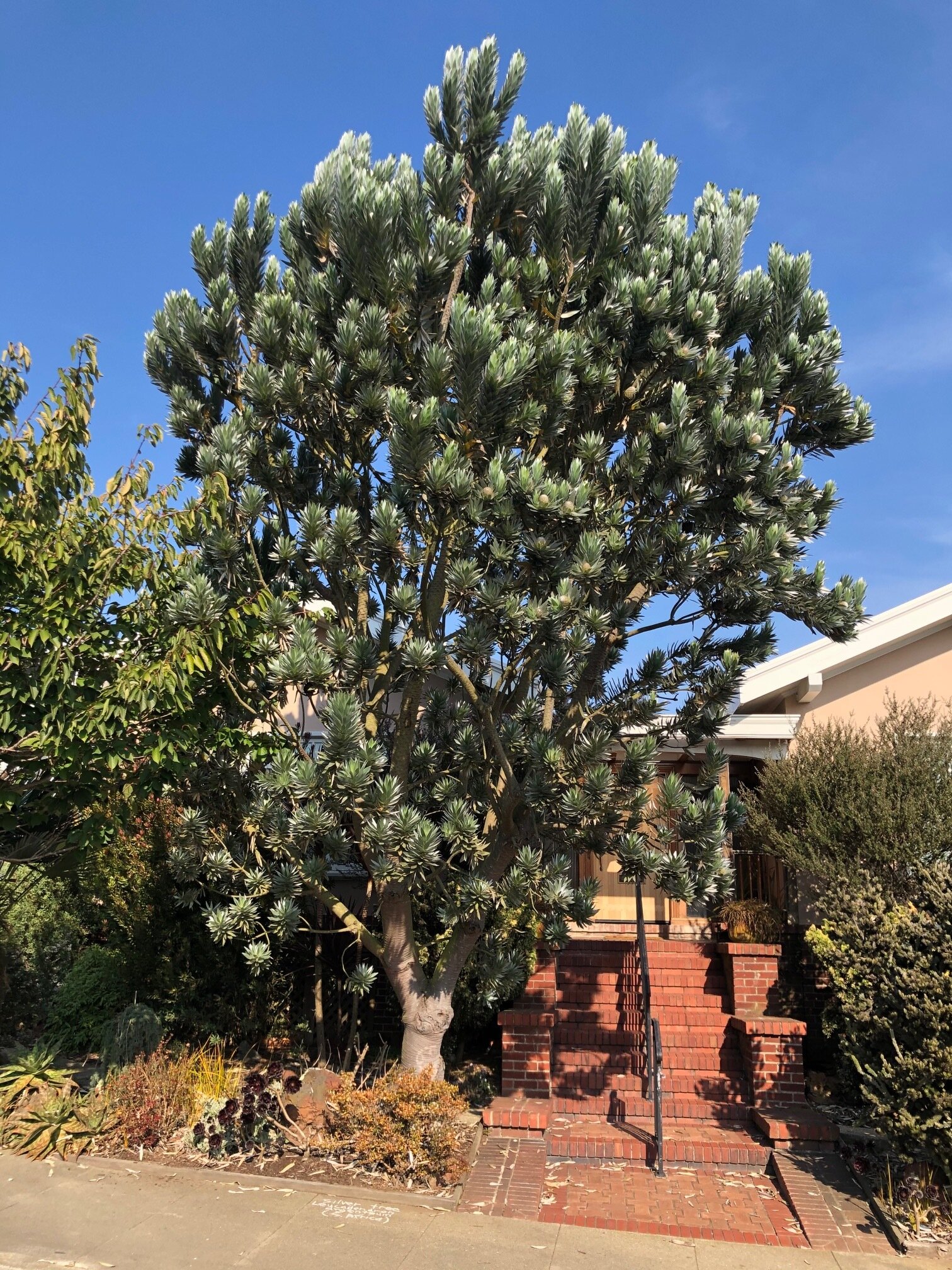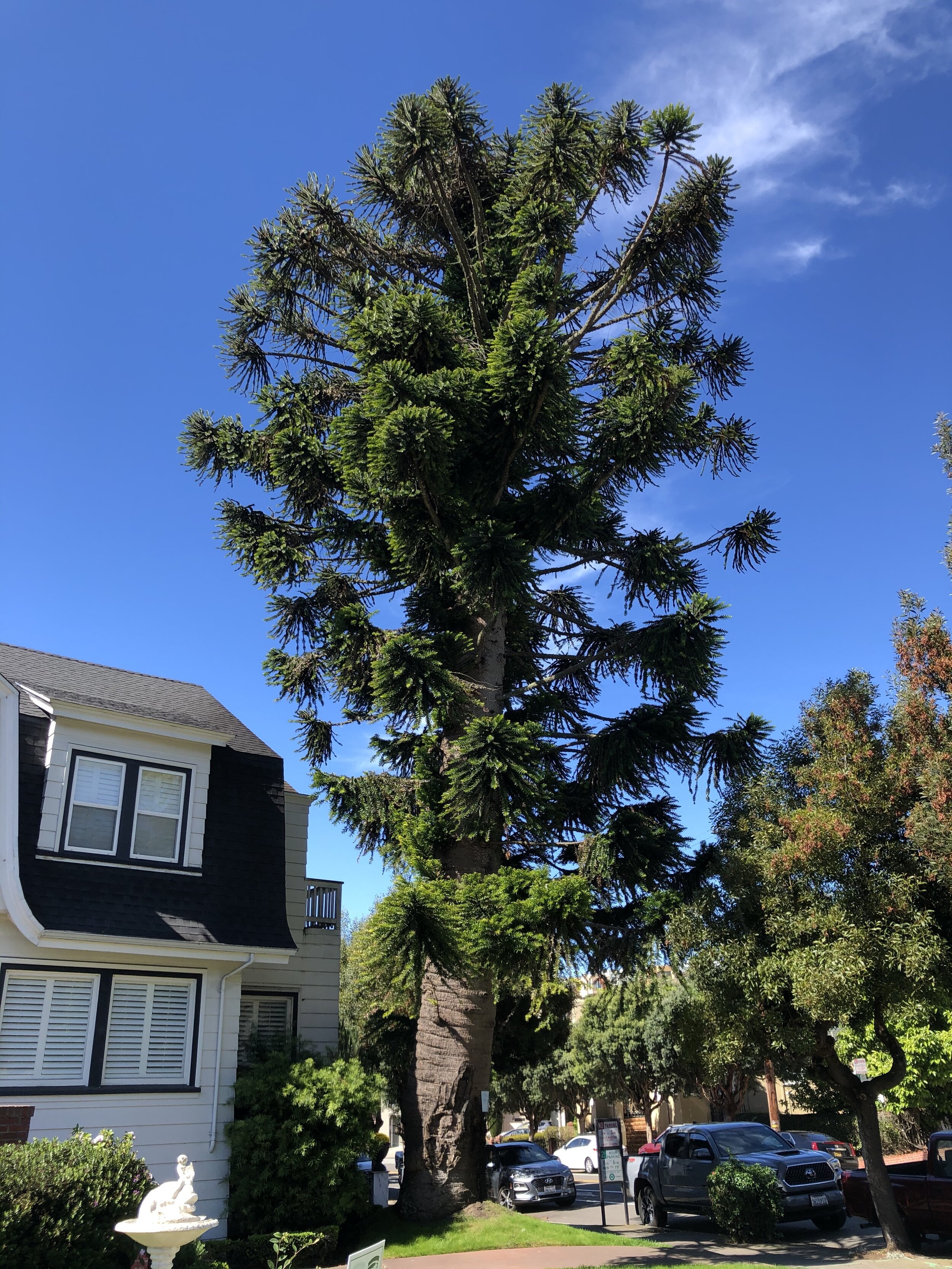Marina "Social Distancing" Tree Tour 2-21-21
Laid out following the 1915 Pan-Pacific International Exposition, the Marina District is, today, one of the most appealing neighborhoods in the city, marked by a decidedly Mediterranean theme in the design of its elegant homes and by a disruption of the street grid seen in most other parts of the city. Neighborhoods of relative affluence generally result in well-tended trees and gardens, and the Marina is no exception, with trees carefully shaped and pruned to preserve views and let in sunlight on the narrow streets. This neighborhood enjoys easy access to the Marina Green, Fort Mason, the Presidio, and the Bay. Fog and steady winds can be a daily presence during the summer, but a sunny winter day in the Marina is like no other in the city. We enjoyed such a day on Sunday as we laid out this tree tour.
This walk focuses on the triangle defined by Marina Boulevard, Fillmore Street, and Cervantes Boulevard. It begins at the southwest corner of Marina Boulevard and Fillmore Street. The walk leads a few yards south on Fillmore before turning southwest on Retiro Way, jogging slightly at Casa Way, and continuing west on Rico Way. At Avila Street, the walk heads northeast for half a block, then returns southwest on Avila to Cervantes Boulevard, southeast on Cervantes to Beach Street, east on Beach to Retiro, and then north on Retiro back to its starting point on Fillmore. This walk is a little more than one mile long, but, unlike recent walks, this one is entirely flat.
Giant yucca (Yucca gigantea
Numbered trees are labeled with common and scientific names and country of origin, all written in white chalk on the sidewalk; accompanying numbers, in blue, run from 1 to 43. White arrows on the pavement provide directions whenever a turn is needed.
Our trio of tree geeks responsible for this tour is the same: Mike Sullivan, author of Trees of San Francisco, Jason Dewees (author of Designing with Palms) and Richard Turner (retired editor of Pacific Horticulture).
Fillmore Street between Marina and Retiro, west side
1. 301 Marina Giant yucca (Yucca gigantea), Mexico and Central America (tree is on Fillmore)
2. 301 Marina Southern magnolia (Magnolia grandiflora), Southeastern USA (tree is on Fillmore, tucked tightly against the wall of the house)
Turn right on Retiro Way. Retiro Way, Fillmore to Casa Way, northwest side
3. 301 Marina Meyer lemon (Citrus x meyeri), hybrid of Southeast Asian species (tree is on Retiro)
4. 155 Retiro Purple-leaf plum (Prunus cerasifera), Eurasia (formerly San Francisco’s most planted street tree)
5. 143 Retiro Marjory Channon pittosporum (Pittosporum tenuifolium ‘Marjory Channon’), New Zealand
Jog slightly to the right to 2 Casa Way, then continue south on Retiro.
closeup of Blackwood acacia (Acacia melanoxylon
6. 2 Casa Blackwood acacia (Acacia melanoxylon), Southeast Australia (there are many throughout the neighborhood, but this is one of the largest and most beautiful)
Turn right (west) on Rico Way. Rico Way, Casa to Avila, north and northeast side
7. 12 Rico Brush cherry (Syzygium australe, previously known as S. paniculatum), Eastern Australia
8. 26 Rico Evergreen dogwood (Cornus capitata), Himalayas (watch for the white flowers in late spring, followed by red fruits in the fall)
9. 40 Rico Tree aloe (Aloe arborescens), South Africa (this species blooms reliably almost anywhere in the city from late January into March; hummingbirds love the tubular flowers)
English holly (Ilex aquifolium), Western Europe and North Africa (tree is behind the aloe; this cultivar lacks the sharp teeth typically found on the leaf margins, and has smaller clusters of red berries)
Natchez crape myrtle (Lagerstroemia x ‘Natchez’)
10. 60 Rico Natchez crape myrtle (Lagerstroemia x ‘Natchez’), hybrid of Asian species (developed by the National Arboretum in DC; notable for its beautifully mottled bark, outstanding fall color, and its mildew resistance, making it a good choice for San Francisco; these two trees are the biggest of their kind in San Francisco: City Champions!)
11. 85 Rico Monterey pine (Pinus radiata), Año Nuevo, Monterey, Cambria, CA native (tree is across the street; the most widely planted coniferous tree in the world, mostly for lumber)
12. 490 Avila Olive (Olea europaea), Mediterranean Basin (four trees on Rico)
13. 490 Avila Japanese camellia or rose of winter (Camellia japonica), East Asia (two multi-trunked trees on Rico; though usually grown as a shrub for its beautiful late winter/spring flowers, Japanese camellia is actually a small tree)
Turn right on Avila, and cross to the west side of the street. Avila Street, Marina to Cervantes, northwest side
14. 425 Marina Orange tree (Citrus x sinensis), hybrid of Asian species (tree is in the rear garden, on Avila)
White flowering plum (Prunus cerasifera)
15. 425 Marina White flowering plum (Prunus cerasifera), Eurasia (tree is in the rear garden, on Avila; less commonly seen than the pink flowering plums)
16. 465 Avila New Zealand tea tree (Leptospermum scoparium), New Zealand
17. 465 Avila Saucer magnolia (Magnolia x soulangeana), hybrid of East Asian species, developed in France
18. 451 Avila Peppermint willow (Agonis flexuosa), Southwest Australia (on the right of the driveway)
Hercules tree aloe (Aloidendron ‘Hercules’)
19. 451 Avila Hercules tree aloe (Aloidendron ‘Hercules’), hybrid of two South African species (this small but stunning front garden was created by Stephanie Green). The Hercules tree aloes may be City Champions – the largest in San Francisco.
20. 451 Avila Sago (Cycas revoluta), Japan (eventually becomes a short-trunked tree; note the dramatic flowering cone in the center of the foliage)
Sago (Cycas revoluta
21. 431 Avila Cabbage tree (Cordyline australis ‘Atropurpurea’), New Zealand
22. 431 Avila Blue Mediterranean fan palm (Chamaerops humilis var. argentea), Morocco and Algeria (this is another stunning garden created by Stephanie Green)
23. 431 Avila Baby queen palm (Chamaedorea plumosa), Chiapas, Mexico (tree is within the entry courtyard)
Queen palm (Syagrus romanzoffiana
Queen palms (Syagrus romanzoffiana), South Brazil (five trees)
Ovens wattle (Acacia pravissima)
Turn right on Cervantes Boulevard for a number of trees fronting 200 Cervantes, after which you’ll backtrack and head southeast on Cervantes, crossing Avila Street.
24. 200 Cervantes Ovens wattle (Acacia pravissima), East Australia (tree is on Avila, in another garden by Stephanie Green; the tree is one of San Francisco’s biggest, possibly a City Champion)
25. 200 Cervantes Waggie palm (Trachycarpus fortunei ‘Wagnerianus’), China (tree is on Avila)
Waggie palm (Trachycarpus fortunei ‘Wagnerianus’)
Cervantes Blvd, northwest of Avila, northeast side
26. 200 Cervantes Cabbage tree or tī koūka in Māori (Cordyline australis), New Zealand (6 trees)
27. 200 Cervantes Showy banksia (Banksia speciosa), Western Australia
28. 200 Cervantes After Dark peppermint willow (Agonis flexuosa ‘Jervis Bay Afterdark’), southwest Australian cultivar (often less vigorous than the green-leafed species)
29. 200 Cervantes Angel’s trumpet (Brugmansia ‘Charles Grimaldi’), hybrid of South American species (big yellow flowers within the walled garden; developed locally and named for the late San Francisco garden designer)
30. 200 Cervantes China doll tree (Radermachera sinica), China and Taiwan (within the walled garden, behind the angel’s trumpet)
Cervantes Blvd, Avila to Beach, northeast side
31. 400 Avila Indian laurel fig (Ficus microcarpa ‘Nitida’), South Asia (tree is on Cervantes; a common, although problematic, street tree throughout San Francisco)
32. 178 Cervantes Fern-leaf Catalina ironwood (Lyonothamnus floribundus subsp. asplenifolius), CA’s Channel Islands, except Catalina; CA native
33. 168 Cervantes Brisbane box (Lophostemon confertus), Eastern Australia
Red-flowering gum (Corymbia ficifolia)
34. 138 Cervantes Red-flowering gum (Corymbia ficifolia), Southwest Australia
35. 130 Cervantes Purple potato bush (Lycianthes rantonnetii), Paraguay (typically a large shrub, this has been trained into a tree-like form; flowers all year)
Purple potato bush (Lycianthes rantonnetii)
36. 124 Cervantes English hawthorn (Crataegus laevigata), west and central Europe
37. 118 Cervantes Kwanzan flowering cherry (Prunus serrulata ‘Kwanzan’), East Asia (watch for the big pink flowers in April)
Turn left (east) on Beach Street. Beach Street, Cervantes to Retiro, north side
Glossy privet (Ligustrum lucidum)
38. 1770 Beach Glossy privet (Ligustrum lucidum), Southern China
39. 1775 Beach Loquat (Rhaphiolepis loquata, syn. Eriobotrya japonica), Southeast China, Vietnam, and Taiwan (two trees across the street; fruit is edible)
40. 1764 Beach Victorian box (Pittosporum undulatum), Eastern Australia
Turn left on Retiro Way. Retiro Way, Beach to Casa, west side
41. 25 Retiro Soapbark tree (Quillaja saponaria), Chile
**Carefully cross Retiro Way to the east side**
Not a tree, but a cool solar installation in lieu of windows in the Marina!
42. 20 Retiro Evergreen pear (Pyrus kawakamii), Taiwan
Retiro Way, Casa to Fillmore, southeast side
43. 120 Retiro Mock-orange (Pittosporum tobira), Japan, China, and Korea (intensely fragrant flowers later in the year)
The Marina tree tour ends here, a few yards from its beginning at Fillmore and Marina Blvd.
Our regular commercial: This walking tour was organized by Mike Sullivan, author of The Trees of San Francisco and webmaster of www.sftrees.com; Jason Dewees, horticulturist at Flora Grubb Gardens and author of Designing with Palms; and Richard Turner, retired editor of Pacific Horticulture magazine . You can follow Mike and Jason on their tree-themed Instagram pages at @sftreeguy and @loulufan. Richard edited another great book on San Francisco trees: Elizabeth McClintock’s Trees of Golden Gate Park. If you’re a tree enthusiast, buy all three books!






























